Resources
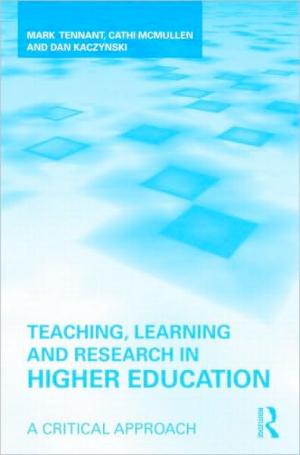
Teaching, Learning and Research in Higher Education offers a combination of critical perspectives and practical advice that is ideally suited for individuals interested in enhancing their practice through analysis and critique. The aim is to promote a critical understanding of one's own practices: to foster personal and professional formation through a reflexive engagement with one's environment and circumstances. At a practical level this means to continuously think about how to adjust practice rather than following a formulaic approach derived from any particular educational theory. Teaching, Learning and Research in Higher Education argues that academics can find space for their own agency in the midst of institutional policies and practices that serve to frame, as well as delimit and constrain, what counts as good academic work in teaching and research. This text bridges a gap between those books that provide a high-level analysis of contemporary higher education, the more practical texts on how to be a good teacher in higher education, and those texts which aim to improve teaching through better understanding of the learning process. Topical chapters include: Teacher-learner relationship, Learning groups, Practice-oriented learning, Teaching for diversity, e-learning, Assessment, Approaches to Staff Development, Quality assurance, Supervision and Research education, Doing research, and Teaching & Research. A must-have resource for higher education professions, academic developers, professionals, and anyone looking to improve their teaching and learning practices, Teaching,Learning and Research in Higher Education is also appropriate for continuing and professional development courses in the UK and teaching and learning courses in the US. Mark Tennant is Dean of the University Graduate School, University of Technology, Sydney. Cathi McMullen is Lecturer in the School of Marketing and Management at Charles Sturt University. Dan Kaczynski is Professor in the Educational Leadership department at Central Michigan University. (From the Publisher)
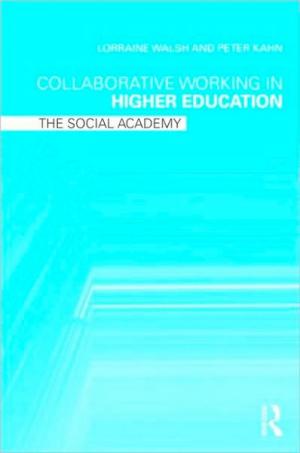
Collaborative working is an increasingly vital part of Higher Education academic life. Traditionally, university culture supported individual research and scholarship. Today, the focus has shifted from the individual to the group or team. Collaborative Working in Higher Education takes the reader on a journey of examination, discussion, and reflection of emerging collaborative practices. The book offers suggestions for developing practice via a broad overview of the key aspects of collaboration and collaborative working, informed by focused case studies and the international perspectives of the contributing authors. The book has three main parts: Part I: Examines the social nature of collaborative working from a practical and critical perspective, focusing on four dimensions of collaborative working: academic practice, professional dialogues, personal and organizational engagement and social structures. It considers organizational models, varied approaches, potential challenges posed by collaborative working, and reflection on the management of collaboration at different stages. Part II: Focuses on the different aspects of collaborative working, building on the dimensions introduced in Part I, and addressing the crossing of boundaries. It looks at different contexts for collaboration (e.g. discipline-based, departmental, institutional and international) using case studies as examples of collaborative strategies in action, providing learning points and recommendations for practical applications. Part III: In addition to considering forms of collaboration for the future, this part of the book engages the reader with athough-provoking round-table discussion that itself embodies an act of collaboration. Collaborative Working in Higher Education is a comprehensive analysis of how collaboration is reforming academic life. It examines the shifts in working practices and reflects on how that shift can be supported and developed to improve practice. Higher Education faculty, administrators, researchers, managers and anyone involved in collaborative working across their institution will find this book a highly useful guide as they embark on their own collaborations. (From the Publisher)
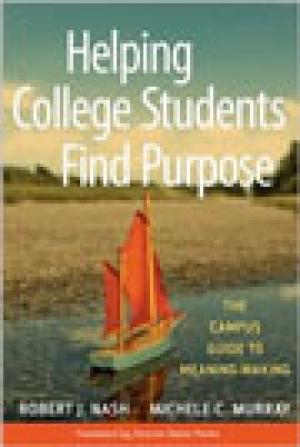
Praise for Helping College Students Find Purpose A generous and inspiring book! In the spirit of 'convocation,' Nash and Murray call together both university faculty and student affairs professionals to provide them new means for helping more college students realize the highest purpose of higher education—that, in pursuing the means to make a living, one comes to make a meaning worth living for. Educators across campuses—faculty and administrators alike—will find in this book not only the importance of helping their students construct meaning upon which to base their academic and life ambitions, but also practical suggestions for doing so. Ultimately, those who will benefit most from this book are students whose education inside and outside the classroom is informed by the type of cross-campus, interdisciplinary approach to meaning-making put forth by the authors. This comprehensive compendium is a must-read for any higher education professional interested in responding to students' ubiquitous concerns about existential issues concerning purpose and meaning. It brings together classical and contemporary thought, conceptual depth, and concrete suggestions for practice. This scholarship is enriched and enlivened by the authors' personal perspectives and experiences, and by student voices and vignettes. Buy it and keep it handy as a source of wisdom and good counsel. A thoughtful, provocative, moving, yet practical guide for any teacher seeking to make the college classroom a space for inspiration and hope. (From the Publisher)
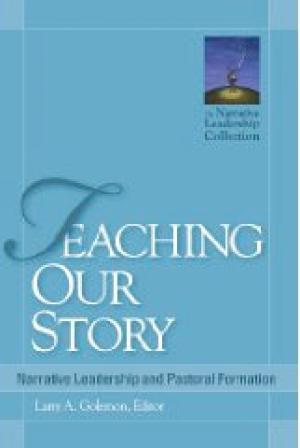
As congregations become intentional story-forming communities, they can shape the lives of millions of generative, faithful, and civic-minded adults. To do so, a framework that relates narrative work to the full range of congregational life is needed. Teaching Our Story offers such a framework, featuring essays that examine crucial shapers of narrative, outline a course in preaching that addresses crucial questions for today's church leaders, illuminate the creative power of listening to the collective stories of a faith community, and observe what can happen when first-year seminary students are asked to become story brokers--integrating the stories from their communities with biblical stories, their own personal stories, and the theological doctrines formed within the story of their tradition. (From the Publisher)
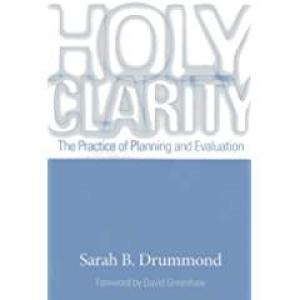
In Holy Clarity, Sarah Drummond explores the most basic reason leaders of religious organizations conduct evaluations: To find and create God-pleasing clarity regarding the organization's purpose and the impact of its activities. Leadership and evaluation are not separate disciplines, she argues. Effective leaders evaluate because they need to know what is happening in their organizations and how those activities are effecting change. Drummond first describes the way in which our postmodern culture makes clarity difficult to obtain. She then looks at holy clarity from a biblical and theological perspective and make the case that it is a spiritual discipline that can stand on its own theological merits. She presents four approaches to evaluation that can help a leader to guide a community toward greater clarity, both when evaluating or analyzing programs and when planning and starting programs. Finally, she considers the work of clarification as a faith practice, one that can make a pastor or layperson not just a better leader, but a better Christian who is more firmly grounded in God. Each chapter concludes with a fictional case study that provides a jumping-off point for discussion and helps bring her theory to life. (From the Publisher)
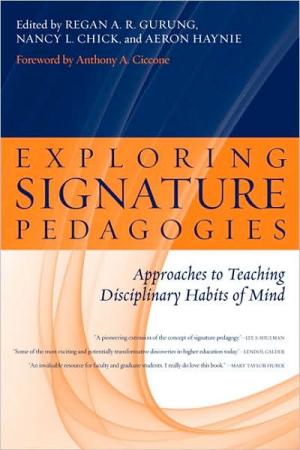
From the Foreword These authors have clearly shown the value in looking for the signature pedagogies of their disciplines. Nothing uncovers hidden assumptions about desired knowledge, skills, and dispositions better than a careful examination of our most cherished practices. The authors inspire specialists in other disciplines to do the same. Furthermore, they invite other colleagues to explore whether relatively new, interdisciplinary fields such as Women's Studies and Global Studies have, or should have, a signature pedagogy consistent with their understanding of what it means to 'apprentice' in these areas. How do individual disciplines foster deep learning, and get students to think like disciplinary experts? With contributions from the sciences, humanities, and the arts, this book critically explores how to best foster student learning within and across the disciplines. This book represents a major advance in the Scholarship of Teaching and Learning (SoTL) by moving beyond individual case studies, best practices, and the work of individual scholars, to focus on the unique content and characteristic pedagogies of major disciplines. Each chapter begins by summarizing the SoTL literature on the pedagogies of a specific discipline, and by examining and analyzing its traditional practices, paying particular attention to how faculty evaluate success. Each concludes by the articulating for its discipline the elements of a "signature pedagogy" that will improve teaching and learning, and by offering an agenda for futureresearch. Each chapter explores what the pedagogical literature of the discipline suggests are the optimal ways to teach material in that field, and to verify the resulting learning. Each author is concerned about how to engage students in the ways of knowing, the habits of mind, and the values used by experts in his or her field. Readers will not only benefit from the chapters most relevant to their disciplines. As faculty members consider how their courses fit into the broader curriculum and relate to the other disciplines, and design learning activities and goals not only within the discipline but also within the broader objectives of liberal education, they will appreciate the cross-disciplinary understandings this book affords. (From the Publisher)
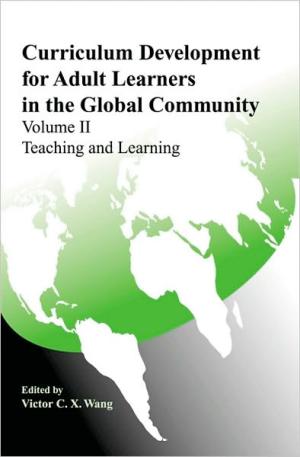
Adult and continuing education continues to evolve as both a strong discipline and a professional field of practice throughout the global community. Both adult educators and adult learners require a common and informed conceptual and theoretical framework to assist them in developing meaningful curricula for adult learners. This book, in a collective and unified manner, describes innovative strategies for developing curricula for adult learners in diverse social, cultural, and economic contexts. (From the Publisher)
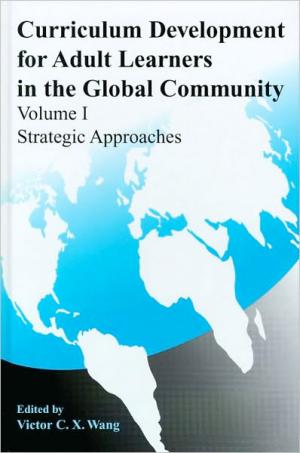
Adult and continuing education continues to evolve as both a strong discipline and a professional field of practice throughout the global community. Both adult educators and adult learners require a common and informed conceptual and theoretical framework to assist them in developing meaningful curricula for adult learners. This book, in a collective and unified manner, describes innovative strategies for developing curricula for adult learners in diverse social, cultural, and economic contexts. (From the Publisher)
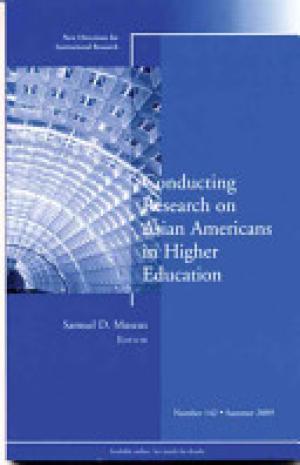
From the Editor This volume of New Directions for Institutional Research moves beyond pervasive oversimplified and preconceived notions about Asian Americans in higher education and offers new directions in studying this population. The authors highlight the complexities inherent in the realities of Asian Americans in higher education. In addition to deconstructing common misconceptions that lead to the invisibility of Asian Americans in higher education research, they discuss methodological issues related to disaggregating data, assessing programmatic interventions, conducting campus climate research, engaging Asian American undergraduates in the research process, and using critical perspectives related to Asian Americans. They also discuss key challenges and future directions in research on this population.
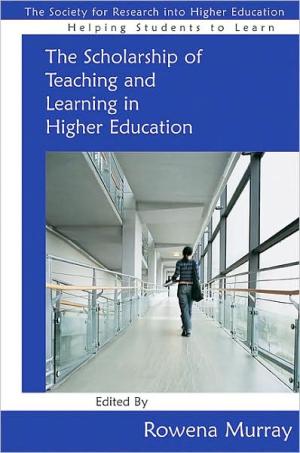
This book is designed for lecturers on a wide range of professional courses. It directly addresses questions that come up again and again in seminar discussions; questions that are fundamental to the values and perspectives of academics across the disciplines: • What is meant by the scholarship of teaching and learning in higher education? • What is the purpose of higher education? • Are lecturers really 'students' on these courses? • How do you do 'reflective' writing? • What do we do with all this theory and jargon? • What does CPD in this area involve? • How do you do 'research' on teaching and learning? This book does not treat each element of the curriculum separately – course design, assessment, evaluation of teaching etc. – since that approach has been well handled by others. Instead, like other books in the series, it addresses elements of the curriculum in an integrated way, thereby educating the reader in how to approach a range of higher education related issues. This book provides a scholarly introduction to the literature on these questions. Like other books in the series, it offers a concise treatment of complex questions. It also provides directions for future study. (From the Publisher)